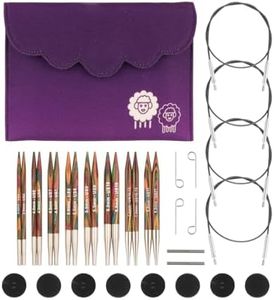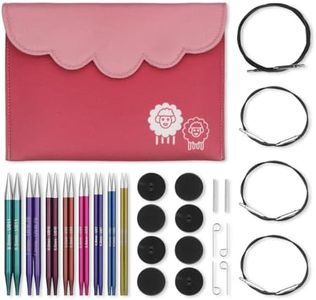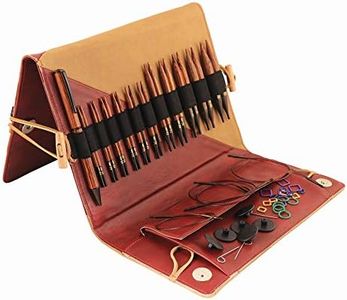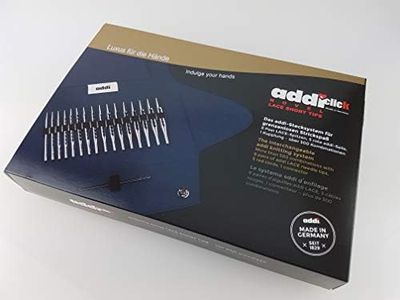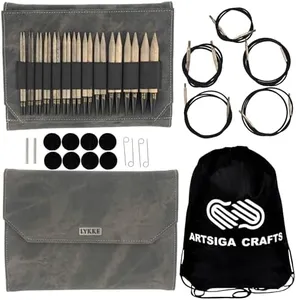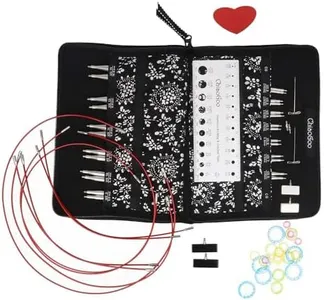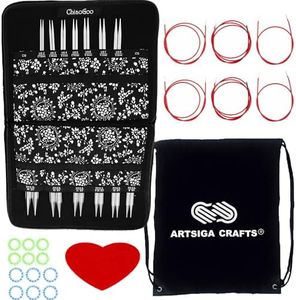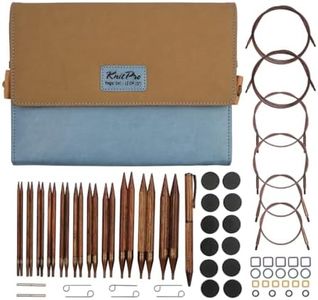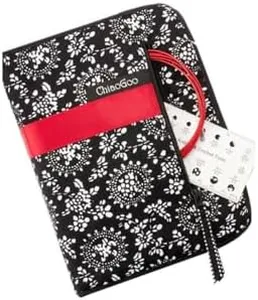We Use CookiesWe use cookies to enhance the security, performance,
functionality and for analytical and promotional activities. By continuing to browse this site you
are agreeing to our privacy policy
10 Best Interchangeable Needles
From leading brands and best sellers available on the web.Buying Guide for the Best Interchangeable Needles
When choosing interchangeable needles for knitting, it's important to focus on how each feature fits your personal knitting habits and the types of projects you love. Interchangeable needle sets allow you to switch out needle tips and cables to suit any pattern, making them a flexible choice for knitters at any level. Start by thinking about the kinds of items you enjoy making, like scarves, sweaters, or socks, and let that guide your preferences for the key features below.Needle MaterialNeedle material refers to what the needles are made from, such as wood, metal, or plastic. This is important because the material affects the feel, weight, and slipperiness of the needles, which can change the knitting experience. Wood is typically warmer to the touch and quieter, while metal is cooler and the stitches slide more easily. Plastic is usually lighter and comes in brighter colors. Beginners might like wood for its grip, while fast knitters often prefer metal for speed. Think about how you knit and what feels most comfortable in your hands, especially if you knit for long periods.
Needle Size RangeNeedle size range means the different diameters included in the set, usually labeled in millimeters or US sizes. This matters because different yarns and projects require different needle sizes to get the right fabric and gauge. Sets may include just the basics or a wide array from skinny (for socks or lace) to thick (for chunky projects). If you knit a variety of patterns, a wide size range gives you flexibility, but if you stick to specific types, focus on those sizes.
Cable Length OptionsCable length refers to how long the cord connecting the needle tips is, often measured in inches or centimeters. It's important because the right length helps you knit anything from hats (short cables) to shawls or blankets (long cables). Sets may include just a couple of cable lengths or many. People who make large, flat pieces need longer cables, while those who knit smaller, round pieces look for shorter options. Think about your most frequent projects to decide what cable lengths you'll actually use.
Cable Connection TypeCable connection type describes how the needle tips attach to the cable, such as screw-on or click/lock systems. This matters because a solid connection prevents the pieces from coming loose during knitting. Some systems are quick and tool-free, while others require a tightening tool for extra security. If you like to change needles often or travel with your knitting, consider how easy and reliable the connection feels in your hands.
Join SmoothnessJoin smoothness is about how seamlessly the needle tip connects with the cable, which affects how easily yarn slides over the connection. A smooth join is crucial to prevent stitches from snagging. Higher-quality sets usually prioritize this, but it's still worth checking. If you use delicate yarns or knit quickly, a smoother join makes your knitting more enjoyable.
Tip Length and ShapeTip length and shape means how long and pointed or blunt the needle points are. This influences how easy it is to grab stitches, especially for more complicated patterns. Longer, sharper tips are great for lace and intricate stitches, while blunter tips work well for basic projects and thicker yarns. Consider the kind of knitting you do most—if your patterns call for a lot of stitch manipulation, a sharper tip can help.
Case and AccessoriesThe case and accessories refer to the carrying case and extra items like cable keys, connectors, and end caps included with the set. A well-organized case makes it easier to keep track of all parts, and extra tools can be useful over time. If you like staying organized or travel with your knitting, a set with a sturdy case and thoughtful accessories will make your life easier.
